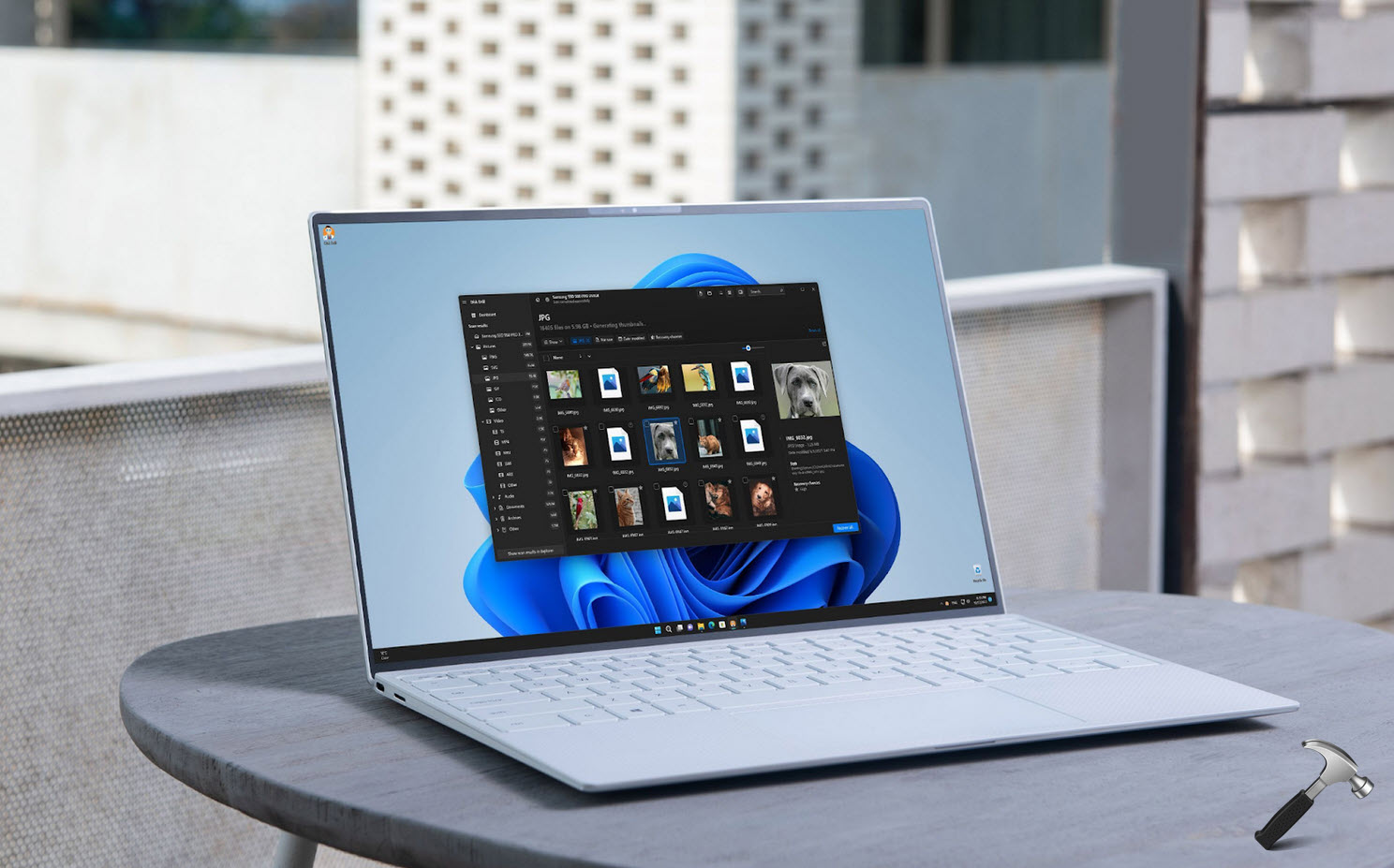For a long time, people have been accustomed to basic partitioning which on the other hand has its own host of advantages and disadvantages. If you are reading this, there are high chances you are beginning to show interest in dynamic disks.

If you are looking for a better way to manage disk volumes in your Windows 10 computer, then it is the right time to read about Dynamic Disk in Windows 10. In this guide, we share more details about the Dynamic Disk management scheme.
Generally, when you install Windows OS, it creates basic partitions on your hard disk. Afterwards, you can decide to create dynamic partitions with the Windows Disk manager tool. Read more about dynamic disk invalid error by following this link. Note that both the basic disk and dynamic disk support master boot record (MBR) partition styles.
Page Contents
So, what is a Dynamic Disk in Windows 10?
To give you a straightforward definition, a Dynamic Disk is a hard drive with dynamic partitions. It is a more flexible option compared to the basic disk partitioning scheme. It creates partitions and logical drives for file storage. Each partition is labeled using a different drive letter.
Alternatively, we can define a dynamic disk as a physical disk that manages its volumes by using an LDM (Logical Disk Manager) database. LDM is a 1MB hidden database at the end of the dynamic disk. It records all information about the volumes on a single disk including related information on each dynamic disk such as volume size and drive letter.
All dynamic disks are interrelated and this allows you to see a “Missing” disk. This information appears in the Windows Disk Management and is saved in the LDM database.
Once dynamic partitions are created, they can be formatted with FAT, FAT32 or NTFS (new Technology File System). One way you can quickly do this is with a Disk Drill from Cleverfiles. Furthermore, dynamic disks are better than basic disks since they create volumes that span multiple physical disks also known as spanned or striped volumes.
It is however unfortunate that spanned or striped volumes are not fault-tolerant. However, you can also create fault tolerant volumes in a similar way as spanned ones.
Differences Between Basic and Dynamic Disk in Windows
Let’s now look at the differences between basic disks and dynamic disks.
Basic Disk Storage
Below are the major elements of basic disk storage.
- Uses normal partition tables
- Contains basic volumes such as extended partitions, primary partitions, and logical drives
- They include multi-disk volumes created using Windows NT 4.0 or earlier editions
Dynamic Disk Storage
Below are the major elements of dynamic storage.
- Contains dynamic volumes such as spanned volumes, simple volumes, striped volumes, RAID-5 volumes, and mirrored volumes
- Does not require Windows restart to perform disk and volume management
- Not supported on portable computers
- Storage types are separated from file system types
In addition, there are five major operations that distinguish dynamic from basic partitioning. These are:
- Dynamic schemes can reactivate missing hard drives
- They support spanning or extending partitions across different physical disks
- Can repair mirrored or RAID-5 volumes using information in the database
- Can remove mirrored volumes or even break them into two volumes
- They can create and delete simple, spanned, mirrored and RAID-5 volumes
Dynamic Disk Features
So far, you can figure out how dynamic disks work. We will now discuss the features in detail to give you a better understanding.
Dynamic disks use dynamic volume
Volume also means partition and they mainly use the NTFS file system, although they can also use the older FAT and FAT32 file systems. The volume can be split, converted or even expanded after they are created.
On the same hard drive, you can create up to 2,000 dynamic volumes regardless of whether it uses GPT or MBR partition schemes. This makes them more immune to disk corruption. It is however recommended to have just 32 dynamic volumes or even less for better disk management.
Information on partitions is managed using a database
The dynamic partition scheme takes care of the information contained in the many partitions. This is done by the VDS and LDM database. They provide a user interface that helps in analyzing disk volumes, formats and sizes.
The database sends constant queries to the disk and receives their responses. It then uses these responses to draw graphical representations of disk volumes.
Creates up to 5 types of volumes
You can create up to 5 types of partitions with a dynamic disk scheme. These are simple volumes, Mirrored, Striped, Spanned, and RAID-5. Note that mirrored volumes are fault tolerant. By “fault tolerant,” this is to say that in case one of the physical disks fails, it can be replaced and the mirrored volume recovered.
Only available in Windows OS
Dynamic disk management scheme is only available in Windows 8.1, 10, 11, and Windows Server 2008, 2012, 2016, and 2022.
How Does Dynamic Disk Work?
For basic partitions, they keep track of the information contained in its partitions using a partition table. On the other hand, a dynamic scheme does not use partition tables to keep the information about the disk.
MBR partition style keeps their database in the last 1MB space of the disk. On the other hand, GPT partitions keep their database in a reserved partition of 1MB size too.
Both LDM and VDS (virtual disk service) retrieves configuration information of the disk. They are the Windows APIs (application programming interface).
Dynamic volumes can repair damaged databases using the information derived from the database of another volume. This makes it easier to fix hard drives without formatting. This is because each dynamic disk stores a copy of each dynamic database file.
Pros and Cons of Dynamic Disk
Pros
- Can create or delete different volumes
- More space and improved performance
- Creates fault-tolerant volumes
- Easier to manage disk volumes
- Unlimited number of partitions
Cons
- Does not support dual operating systems
- Cannot be detected by a machine other than the one creating it
- Files can be lost when converting back to basic disk
- Lack of tools that can repair corrupted sectors
Wrap Up
It is without doubt that dynamic disks are a better way to manage disk space in Windows 10. If after reading this article you developed more interest in using a dynamic disk scheme, we wish you success in your next move. You can also read more on how Disk Drill can help you secure databases in your new data management system.
![KapilArya.com is a Windows troubleshooting & how to tutorials blog from Kapil Arya [Microsoft MVP (Windows IT Pro)]. KapilArya.com](https://images.kapilarya.com/Logo1.svg)







![[Latest Windows 11 Update] What’s new in KB5063060? [Latest Windows 11 Update] What’s new in KB5063060?](https://www.kapilarya.com/assets/Windows11-Update.png)
![[Latest Windows 10 Update] What’s new in KB5060533? [Latest Windows 10 Update] What’s new in KB5060533?](https://www.kapilarya.com/assets/Windows10-Update.png)

Leave a Reply